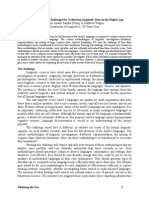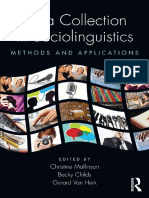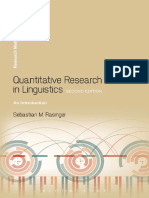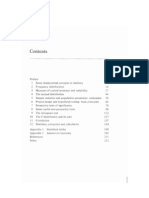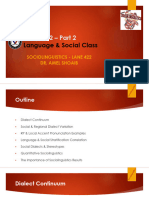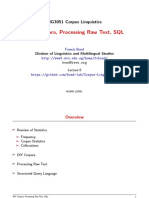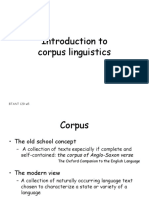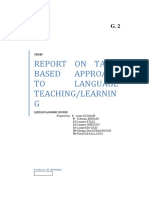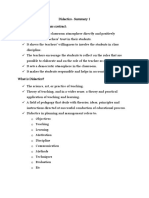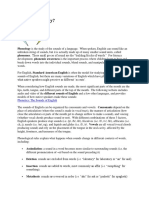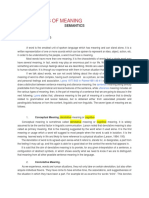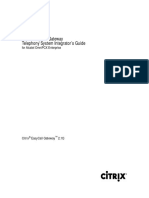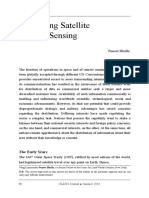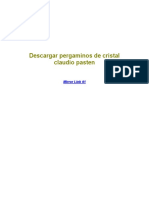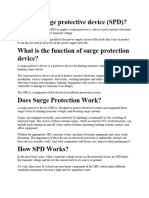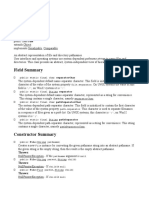Statistics in corpus-based sociolinguistics: A practical workshop
Workshop convenor: Vaclav Brezina (Linguistics summer school, Dacice 18th August 2014)
Overview
This workshop discusses different statistical procedures available for analysis of sociolinguistic data in large
language corpora. I will demonstrate that the traditional approach of using aggregated data with the log-
likelihood statistic is in principle unreliable. Instead, the workshop will offer suggestions for alternative
methodologies and statistical procedures, which take into account within group differences and therefore
produce more meaningful results. As part of the workshop, a new research tool BNC64 Search &
Compare will be introduced. BNC64 Search & Compare can carry out detailed analyses based on a socially-
balanced spoken corpus BNC64 (1.5 million words). BNC64 represents the speech of 64 speakers - 32 men
and 32 women - extracted from the British National Corpus (BNC). BNC64 Search and Compare is a web-
based environment that creates simple visualisations, calculates statistics and produces concordances. The
website was created to allow for easy visualisations of complex corpus data and easy testing of a number of
different sociolinguistic hypotheses. The workshop will be structured around a series of practical exercises
guiding the participants through different types of analysis of corpus data and statistical procedures. The
following areas will be covered:
Sociolinguistic data in language corpora
Descriptive and inferential statistics
Individual and social variation
The null-hypothesis testing paradigm and the "new" statistics
Workshop convenor: Vaclav Brezina (v.brezina@lancaster.ac.uk), ESRC Centre for Corpus Approaches to
Social Science, Lancaster University
Exercises
Task 1: Find the best model for the data. If you were to choose ONE number to describe each of the
following datasets, what would this number be (It doesn’t have to be a number from the dataset)?
Table 1. Three data sets
Data set Model
Data set 1: 10, 10, 10, 10, 10, 10, 10, 10, 10, 10
Data set 2: 10, 11, 8, 9, 10, 11, 12, 9, 10, 10
Data set 3: 10, 11, 8, 9, 100, 11, 12, 9, 10, 10
1
� Statistics in corpus-based sociolinguistics: A practical workshop
Workshop convenor: Vaclav Brezina (Linguistics summer school, Dacice 18th August 2014)
Task 2: Use the three data sets from Task 1 and calculate the mean & SD, trimmed mean &
Winsorized SD. Use the online statistics tool to help you with the calculations.
http://corpora.lancs.ac.uk/bnc64/workshop.php
Compare your models from Task 1 with the results obtained in Task 2.
Table 2. Measures of central tendency
Dataset Mean SD 20% trimmed Winsorized SD
mean
Dataset 1
Dataset 2
Dataset 3
Task 3: Compare the use of linguistic variable X in a contingency table (traditional approach)
A) Look at Table 3. It provides data about the frequency of variable X in the Female and the Male
subcorpus: What can you say about the use of variable X in the speech of male and female
speakers?
Table 3. Contingency table based on aggregate data
Female subcorpus Male subcorpus
Occurrences of variable X 140 100
Corpus size (tokens) 5,000 5,000
Based on the contingency table (Table 3) we can conclude that____________________________________
_______________________________________________________________________________________
B) Calculate the log-likelihood score and the p-value using the UCREL LL calculator
(http://ucrel.lancs.ac.uk/llwizard.html). Log likelihood score is: _______________________
The p-value is:____________________
Do the results of the statistical analysis confirm your initial observation?
_______________________________________________________________________________________
2
� Statistics in corpus-based sociolinguistics: A practical workshop
Workshop convenor: Vaclav Brezina (Linguistics summer school, Dacice 18th August 2014)
Task 4: Looking inside corpora…
Look at Table 4. It provides data about the distribution of variable X among Female and Male speakers in
the corpus. What can you say about the use of variable X in the speech of male and female speakers?
Table 4. Distribution of linguistic variable X in the speech of individual speakers
Freq. of ling.
Individual speakers variable X Sample size
F1 12 1,000
F2 10 1,000
F3 100 1,000
F4 10 1,000
F5 8 1,000
M1 22 1,000
M2 20 1,000
M3 20 1,000
M4 20 1,000
M5 18 1,000
Based on the distribution table (Table 4) we can conclude that____________________________________
______________________________________________________________________________________
Task 5: Appropriate generalising: Measures of central tendency (mean, 20% trimmed mean), Robust
mean difference & Robust Cohen’s d.
a) Use the data from Table 4. Calculate the mean for the female and for the male group.
b) Calculate 20% trimmed mean by removing the lowest and the highest 20% of the values from the
data set and by calculating the arithmetic average of the remaining values.
c) Calculate the difference between the female and male group using Robust mean difference and
Robust Cohen’s d.
Table 5. Measures of central tendency
Female group Male group Difference between the female
and male group
Mean
20 % trimmed mean
Robust mean
difference, incl. 95% CI
Robust Cohen’s d
3
� Statistics in corpus-based sociolinguistics: A practical workshop
Workshop convenor: Vaclav Brezina (Linguistics summer school, Dacice 18th August 2014)
Task 6: Do men swear more than women? Use the BNC64 Search & Compare to test different socio-
linguistic hypotheses about swearing. Pay attention to the different statistical measures and their
interpretation.
Table 6. Swearing and gender: BNC64
Swear word Statistically significant result? Meaningful difference?
1.
2.
3.
4.
Task 7: Find typically male and typically female linguistic features in BNC 64. Use the BNC64 Search &
Compare to test different socio-linguistic hypotheses.





